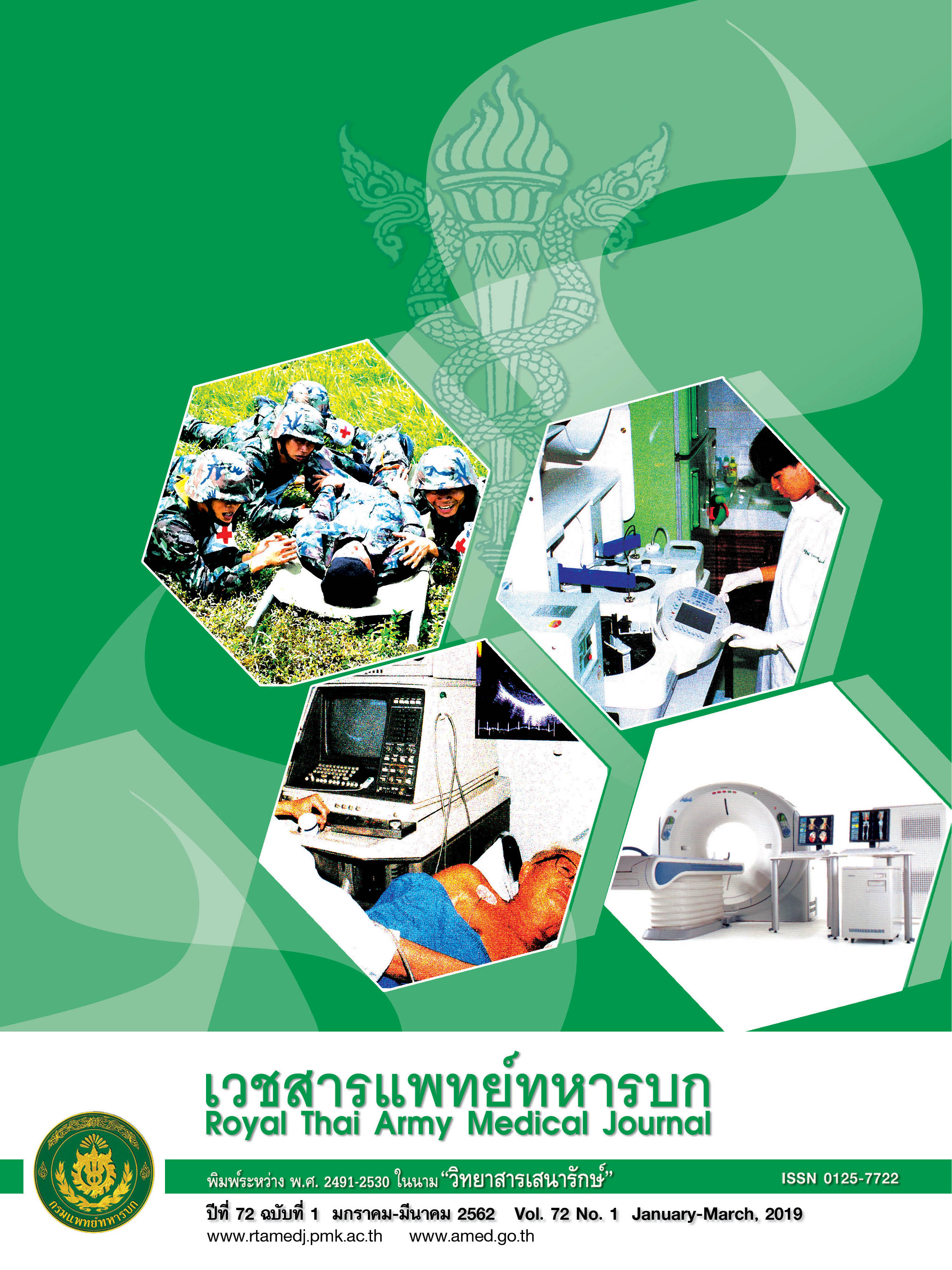Antioxidative and neuroprotective effects of Aquilaria crassna leaf on SK-N-SH cell line
Main Article Content
Abstract
Abstract:
Introduction: Aquilaria crassna Pierre ex Lecomte (agarwood) has been used as Ayurvedic medicine and Thai traditional medicine. Its leaf powder is currently available in a form of tea. Although the agarwood leaf tea has been consumed for a period of time, there have been limited scientific data regarding this plant extract. Objectives: The purpose of this research was to evaluate antioxidant and neuroprotective effects against reactive oxygen species (ROS) in SK-N-SH cell line. In addition, toxicity was determined by using SK-N-SH, HEK 293 and HepaRG cell lines. Methods: Aquilaria crassna leave crude extraction was prepared by maceration with ethanol then partition with acetate and water. Aqueous fraction was used for all experiments. Toxicity was determined by MTT assay in 3 cell lines; SK-N-SH, HEK 293, and HepaRG. Anti-oxidative effects were investigated by using anti-lipid peroxidation assay, hydrogen peroxide scavenging activity, and intracellular ROS assay in SK-N-SH cell line induced by glutamate and dexamethasone. Results: MTT assay revealed the viability in 3 cell lines with the extract concentration ranging from 0 to 4 mg/mL. The intracellular ROS level in extract-treated group increased slower than that of non-pretreated group. The pretreated cells showed a slight change in cell morphology after exposure to dexamethasone. In addition, the extract exhibited superior anti-lipid peroxidation compared to vita- min E. Conclusion: Aquilaria crassna leaf extract possessed cytoprotective and antioxidant properties. It also exhibited a relatively safe property. These results encourage further development of Aquilaria crassna leaf extract as natural-derived medicine or nutraceuticals for treatment of neurodegenerative or oxidative-related diseases.
Downloads
Article Details
Articles in this journal are copyrighted by the Royal Thai Army Medical Department and published under the Creative Commons Attribution-NonCommercial-NoDerivatives 4.0 International (CC BY-NC-ND 4.0) license.
may be read and used for academic purposes, such as teaching, research, or citation, with proper credit given to the author and the journal.
Use or modification of the articles is prohibited without permission.
Statements expressed in the articles are solely the opinions of the authors.
Authors are fully responsible for the content and accuracy of their articles.
Any other republication of the articles requires permission from the journal.


